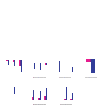Analysis of the mouse mutant Cloth-ears shows a role for the voltage-gated sodium channel Scn8a in peripheral neural hearing loss
- PMID: 19737145
- PMCID: PMC2784214
- DOI: 10.1111/j.1601-183X.2009.00514.x
Analysis of the mouse mutant Cloth-ears shows a role for the voltage-gated sodium channel Scn8a in peripheral neural hearing loss
Abstract
Deafness is the most common sensory disorder in humans and the aetiology of genetic deafness is complex. Mouse mutants have been crucial in identifying genes involved in hearing. However, many deafness genes remain unidentified. Using N-ethyl N-nitrosourea (ENU) mutagenesis to generate new mouse models of deafness, we identified a novel semi-dominant mouse mutant, Cloth-ears (Clth). Cloth-ears mice show reduced acoustic startle response and mild hearing loss from approximately 30 days old. Auditory-evoked brainstem response (ABR) and distortion product otoacoustic emission (DPOAE) analyses indicate that the peripheral neural auditory pathway is impaired in Cloth-ears mice, but that cochlear function is normal. In addition, both Clth/Clth and Clth/+ mice display paroxysmal tremor episodes with behavioural arrest. Clth/Clth mice also show a milder continuous tremor during movement and rest. Longitudinal phenotypic analysis showed that Clth/+ and Clth/Clth mice also have complex defects in behaviour, growth, neurological and motor function. Positional cloning of Cloth-ears identified a point mutation in the neuronal voltage-gated sodium channel alpha-subunit gene, Scn8a, causing an aspartic acid to valine (D981V) change six amino acids downstream of the sixth transmembrane segment of the second domain (D2S6). Complementation testing with a known Scn8a mouse mutant confirmed that this mutation is responsible for the Cloth-ears phenotype. Our findings suggest a novel role for Scn8a in peripheral neural hearing loss and paroxysmal motor dysfunction.
Figures





Similar articles
-
Three ENU-induced neurological mutations in the pore loop of sodium channel Scn8a (Na(v)1.6) and a genetically linked retinal mutation, rd13.Mamm Genome. 2004 May;15(5):344-51. doi: 10.1007/s00335-004-2332-1. Mamm Genome. 2004. PMID: 15170223
-
Single amino acid deletion in transmembrane segment D4S6 of sodium channel Scn8a (Nav1.6) in a mouse mutant with a chronic movement disorder.Neurobiol Dis. 2016 May;89:36-45. doi: 10.1016/j.nbd.2016.01.018. Epub 2016 Jan 22. Neurobiol Dis. 2016. PMID: 26807988 Free PMC article.
-
Mutations of voltage-gated sodium channels in movement disorders and epilepsy.Novartis Found Symp. 2002;241:72-81; discussion 82-6, 226-32. Novartis Found Symp. 2002. PMID: 11771652 Review.
-
The voltage-gated sodium channel Scn8a is a genetic modifier of severe myoclonic epilepsy of infancy.Hum Mol Genet. 2007 Dec 1;16(23):2892-9. doi: 10.1093/hmg/ddm248. Epub 2007 Sep 19. Hum Mol Genet. 2007. PMID: 17881658
-
Sodium channels and neurological disease: insights from Scn8a mutations in the mouse.Neuroscientist. 2001 Apr;7(2):136-45. doi: 10.1177/107385840100700208. Neuroscientist. 2001. PMID: 11496924 Review.
Cited by
-
An Scn1a epilepsy mutation in Scn8a alters seizure susceptibility and behavior.Exp Neurol. 2016 Jan;275 Pt 1(0 1):46-58. doi: 10.1016/j.expneurol.2015.09.008. Epub 2015 Sep 26. Exp Neurol. 2016. PMID: 26410685 Free PMC article.
-
A hearing and vestibular phenotyping pipeline to identify mouse mutants with hearing impairment.Nat Protoc. 2010 Jan;5(1):177-90. doi: 10.1038/nprot.2009.204. Epub 2010 Jan 7. Nat Protoc. 2010. PMID: 20057387
-
Forward genetic approaches to understanding complex behaviors.Curr Top Behav Neurosci. 2012;12:25-58. doi: 10.1007/7854_2011_189. Curr Top Behav Neurosci. 2012. PMID: 22297575 Free PMC article. Review.
-
Next-generation sequencing of small RNAs from inner ear sensory epithelium identifies microRNAs and defines regulatory pathways.BMC Genomics. 2014 Jun 18;15(1):484. doi: 10.1186/1471-2164-15-484. BMC Genomics. 2014. PMID: 24942165 Free PMC article.
-
Sodium channel SCN8A (Nav1.6): properties and de novo mutations in epileptic encephalopathy and intellectual disability.Front Genet. 2013 Oct 28;4:213. doi: 10.3389/fgene.2013.00213. Front Genet. 2013. PMID: 24194747 Free PMC article. Review.
References
-
- Atar O, Avraham KB. Therapeutics of hearing loss: expectations vs reality. Drug Discov Today. 2005;10:1323–1330. - PubMed
-
- Brown SD, Hardisty-Hughes RE, Mburu P. Quiet as a mouse: dissecting the molecular and genetic basis of hearing. Nat Rev Genet. 2008;9:277–290. - PubMed
-
- Buchner DA, Seburn KL, Frankel WN, Meisler MH. Three ENU-induced neurological mutations in the pore loop of sodium channel Scn8a (Na(v)1.6) and a genetically linked retinal mutation, rd13. Mamm Genome. 2004;15:344–351. - PubMed
-
- Burgess DL, Kohrman DC, Galt J, Plummer NW, Jones JM, Spear B, Meisler MH. Mutation of a new sodium channel gene, Scn8a, in the mouse mutant ’motor endplate disease’. Nat Genet. 1995;10:461–465. - PubMed
MeSH terms
Substances
Grants and funding
LinkOut - more resources
Full Text Sources
Molecular Biology Databases

